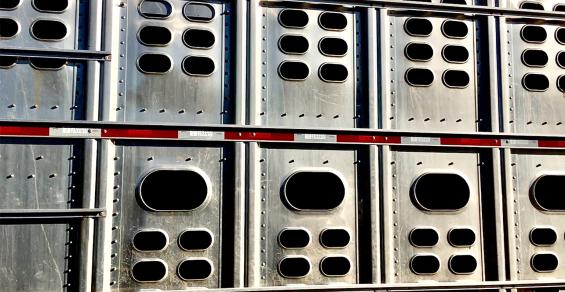Everyone wants to be “exceptional”– until they’re looking at the U.S. Drought Monitor map.
Sadly, a large portion of the western half of Kansas continues to be classified as being in “exceptional” drought as of the Aug. 23 U.S. Drought Monitor map, and it doesn’t seem to be easing up any time soon. In the last 60 days, even those areas that may have had near-normal rainfall couldn’t compete with the excessive heat, further drying out the region’s crops. That has resulted in two-thirds of the state suffering from “severe” drought, or “extreme” and “exceptional” drought for eight or more consecutive weeks.
USDA’s Farm Service Agency reminds livestock producers that the Emergency Assistance for Livestock, Honey Bees and Farm-raised Fish Program (ELAP) is available for those who’ve suffered “above-normal expenses for hauling feed or water to livestock, or hauling livestock to forage/grazing acres due to the impacts of drought.”
Producers must be in qualifying counties, according to the USDA FAS. Currently, 45 Kansas counties have been designated by the USDA as primary disaster areas. They include: Barber, Barton, Chautauqua, Cheyenne, Clark, Comanche, Cowley, Decatur, Edwards, Ellis, Ellsworth, Finney, Ford, Grant, Gray, Greeley, Hamilton, Harper, Haskell, Kearney, Kiowa, Labette, Meade, Montgomery, Morton, Osborne, Pawnee, Pratt, Rawlins, Reno, Rice, Rooks, Rush, Russell, Scott, Seward, Sheridan, Sherman, Stafford, Stanton, Stevens, Sumner, Thomas, Wallace, and Wichita. Contiguous counties are also eligible.
DROUGHT MAP: The Aug. 23 U.S. Drought Monitor Map shows two-thirds of the state is suffering from “severe” drought, or “extreme” and “exceptional” drought. That has triggered USDA Farm Service Agency emergency programs to help livestock producers managing feed and water resources for their herds.
Financial assistance through ELAP covers:
the transportation of water to livestock
the above-normal cost of mileage for transporting feed to livestock
the above-normal cost of transporting livestock to forage or grazing acres
Transportation costs are only reimbursable for loaded miles, one-way, one haul per animal.
“Eligible livestock include cattle, buffalo, goats and sheep, among others, that are maintained for commercial use and located in a county where the qualifying drought conditions occur,” according to the USDA FAS. “A county must have had D2 ‘severe’ drought intensity on the U.S. Drought Monitor for eight consecutive weeks during the normal grazing period, or D3 or D4 drought intensity at any time during the normal grazing period. Producers must have risk in both eligible livestock and eligible grazing land in an eligible county to qualify for ELAP assistance.”
Producers that are transporting water to livestock may get transportation assistance, but only if they’re hauling water to eligible grazing land where they already had adequate watering systems or facilities in place prior to the drought, and that did not normally require water transportation.
Livestock producers must submit a notice of loss to their local FSA office within 30 calendar days of when the loss is apparent. It’s best to contact the local FSA office as soon as the loss of water resources or feed resources is known, FSA advises. And, as always, document expenses through receipts and other records.
For more information, contact a local USDA Service Center, or visit fsa.usda.gov/disaster.
The USDA Farm Service Agency contributed to this article.
Some Kansas counties qualify for emergency Conservation Reserve Program haying and grazing, and other assistance.



